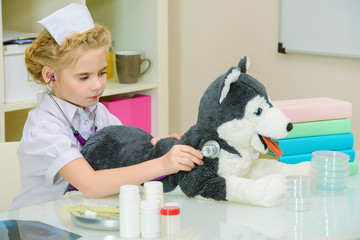Pet first aid & Veterinary Care

Basic procedures. Emergency treatment and first aid for pets should never be used as a substitute for veterinary care. But it may save your pet’s life before you can get your pet to a veterinarian.
Seizures
– Keep your pet away from any objects (including furniture) that might hurt it.
Do not try to restrain the pet.
-Time the seizure (they usually last 2-3 minutes).
-After the seizure has stopped, keep your pet as warm and quiet as possible and
contact your veterinarian.
Fractures
-Muzzle your pet.
-Gently lay your pet on a flat surface for support.
-You can attempt to set the fracture with a homemade splint, but remember that a badly-placed splint may cause more harm than good.
Bleeding (internal)
-Symptoms: bleeding from nose, mouth, rectum, coughing up blood, blood in urine, pale gums, collapse, weak and rapid pulse.
-Keep animal as warm and quiet as possible and transport immediately to a veterinarian.
Shock
-Symptoms: weak pulse, shallow breathing, nervousness, dazed eyes.
Usually follows severe injury or extreme fright.
-Keep animal restrained, warm and quiet.
-If animal is unconscious, keep head level with rest of body.
-Transport the pet immediately to a veterinarian.
Always remember that any first aid administered to your pet should be followed by immediate veterinary care. First aid care is not a substitute for veterinary care, but it may save your pet’s life until it receives veterinary treatment.
FOR YOUR SAFETY
If your pet is injured, he/she is likely in pain, scared, and confused. Be careful to avoid getting hurt, bitten or scratched.
1- Never assume that even the most gentle pet will not bite or scratch if injured. Pain and fear can make animals unpredictable or even dangerous.
2- Don’t attempt to hug an injured pet, and always keep your face away from its mouth. Although this may be your first impulse to comfort your pet, it might only scare them more or cause them pain.
3- Perform any examination slowly and gently. Stop if your pet becomes more agitated.
4- Drive carefully to the veterinary clinic. Panicked or out-of-control driving puts you and your pet at risk.